When to Aerate Your Lawn: The Best Time
The importance of lawn care and aeration.
A healthy green lawn doesn’t happen by accident. Regular attention is required to keep it looking good. One thing that you should do is you need to aerate. Aeration involves removing plugs of soil from areas of the lawn to allow air, water, and nutrients to reach the grass’s roots. This is especially important in high-traffic areas where the soil has been compacted over time.
This post will discuss the best time to aerate and why this will help keep your lawn looking great.
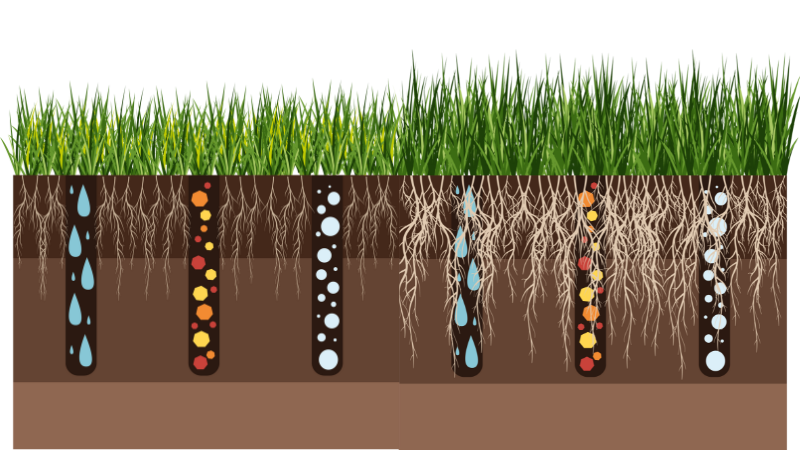
Seasonal Variations and Their Impact on Aeration Timing
Cool-Season Grasses
The best time to aerate this grass is late spring, early summer, or early fall.
Late spring to early summer is the peak growing season for grasses such as fescue, bluegrass, and ryegrass. One of the main benefits of lawn aeration in peak growing periods is that the grass recovers quickly.
Early fall helps cool-season grasses prepare for winter. It may also help if you plan to overseed thin or bare areas at the same time.
Warm-Season Grasses
The best time of year to aerate the lawn with warm-season grasses is late spring, early summer, or early fall.
Grasses such as Bermuda grass, Zoysia grass, and St. Augustine grass grow best from late spring to early summer and thrive in warmer temperatures. This helps the grass roots grow and promotes turf density.
Late summer to early fall is also a good time, as it helps with recovery from the summer and encourages root growth before winter sets in. This is another good time to overseed to fill in those bald spots.
Signs That Indicate the Need for Aeration
One of the most common reasons is compacted soil. This can happen in high-traffic areas or places with clay soil. Compacted soil leads to shallow root growth due to poor water infiltration. Aeration will help loosen the soil.
Another common reason is excessive thatch buildup. Thatch is a layer of dead material, such as roots and dead grass, that builds up quicker than it can decompose. This can suffocate the area and stop water and nutrients from reaching the roots.
If you have any sparse or bare areas, they could also benefit from aeration. This is also a symptom of compacted soil.

Climate Considerations and How They Influence Aeration Timing
Keep an eye on the weather and watch for heavy rain. It is best to aerate when the soil is moist but not too wet. If you have had a period of light rain, it would be a good time as the soil will be more receptive. The moisture level is ideal if the soil falls out of the plugs without prompting.
Another thing to watch for is extreme temperatures. Periods of extreme heat or cold can adversely affect recovery time. Mild temperatures are best for a fast recovery.
Different Methods of Aeration:
Core Aeration, Spike Aeration, and Liquid Aeration
- Core Aeration: This is my favorite method. It involves removing small plugs or cores of soil from the lawn, allowing air, water, and nutrients to penetrate deeper into the soil.
- Spike Aeration: Spike aerators puncture the soil with solid tines or spikes, creating holes without removing soil cores. While less effective than core aeration, spike aeration can help improve surface compaction.
- Liquid Aeration: Liquid aerators are applied to the lawn as a spray or solution, breaking up compacted soil and improving soil structure. Liquid aeration is convenient for minor compaction issues and can be used as a supplement to mechanical aeration.
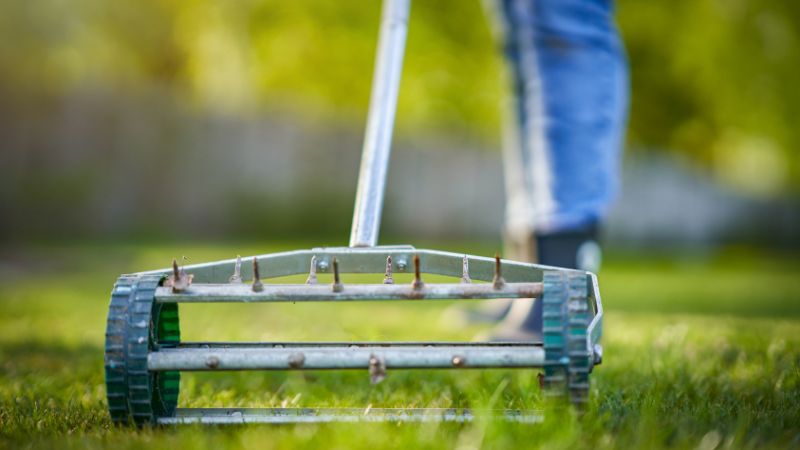
Step-by-Step Guide to Aeration
How to prepare a lawn – Getting Ready for Aeration
For the best results, your lawn will have to be mowed first. For cool-season grasses, the ideal height is 2.5 to 3.5 inches. For warm-season grasses, you can go a bit shorter; around 1.5 to 2.5 inches is best. Water your lawn a day or two before starting. Make sure the ground is moist, not wet. Finally, tidy the lawn a bit, Remove sticks and stones, etc.
Choosing the Right Aerator for Your Lawn Size and Needs
For smaller lawns, you may use a manual or handheld Aerator machine. I have even heard of it being done with a garden fork; however, this is only helpful in more minor trouble spots.
For more extensive lawns, you may need to hire a lawn aerator. If you don’t want to hire a machine, a reasonably priced one is an Electric Dethatcher
Aeration Techniques and Best Practices for Optimal Results
Always ensure you overlap on each pass to avoid missing an area. Change directions often and head in multiple directions to get good coverage. If you have an adjustable head, set the depth between 1 and 3 inches.
For the best results, leave the plugs where they fall to decompose on the lawn. This will feed the lawn and give it organic nutrients.
Common Mistakes to Avoid During the Aeration Process
The most common mistakes I see are skipping preparation and using the wrong equipment. These will not help the lawn. Another mistake I see people make is over-aerating by getting carried away and making too many holes. More is not always better. Sometimes, getting carried away is easy, especially if the machine works well.
A customer saw my loopers and asked if they could borrow them while I mowed the lawn. I warned him not to get carried away. When I finished the front and walked out the back, I saw he had taken too much off some trees. By the time I noticed, it was too late; you can’t put it back,
Aeration machines can be a bit like that.

Nurturing Your Lawn After Aeration
Once you have aerated, it is a great time to overseed or fertilize. This will help the seeds contact the soil, or the fertilizer reach the roots, filling the bald spots and giving you a great-looking lawn in no time.
Don’t forget to keep the soil moist by regularly watering it after aeration for the best results.
In Closing – When to Aerate Your Lawn
Maintaining a healthy lawn is essential, especially in early spring when your lawn needs extra care. One of the key tasks to prioritize is addressing soil compaction, which can be done through aeration. Aerate lawns in early spring or early fall to loosen up the soil and allow roots to grow more efficiently. This is also the best time to oversee a lawn, ensuring your grass stays lush and vibrant. If the soil from your lawn doesn’t seem to respond well to aeration and overseeding, it might be time to hire a lawn service to help.
When your lawn is actively growing in the spring, it’s time to aerate your lawn to promote the health of both the soil and grass. Whether it’s early spring or fall, aeration and seeding are crucial steps toward achieving a beautiful lawn. If your lawn doesn’t seem to thrive, consider dethatching it in late summer or early fall to remove any built-up debris and allow for better growth.
Frequently asked questions.
When Is The Best Time To Water My Lawn?
How To Fix Too Much Lime On Your Lawn?
Why Is Your Lawn Growing at Different Rates?
Can You Hydroseed Over An Existing Lawn?
Get tips & tricks on how to grow a profitable lawn care business delivered to you inbox every week.
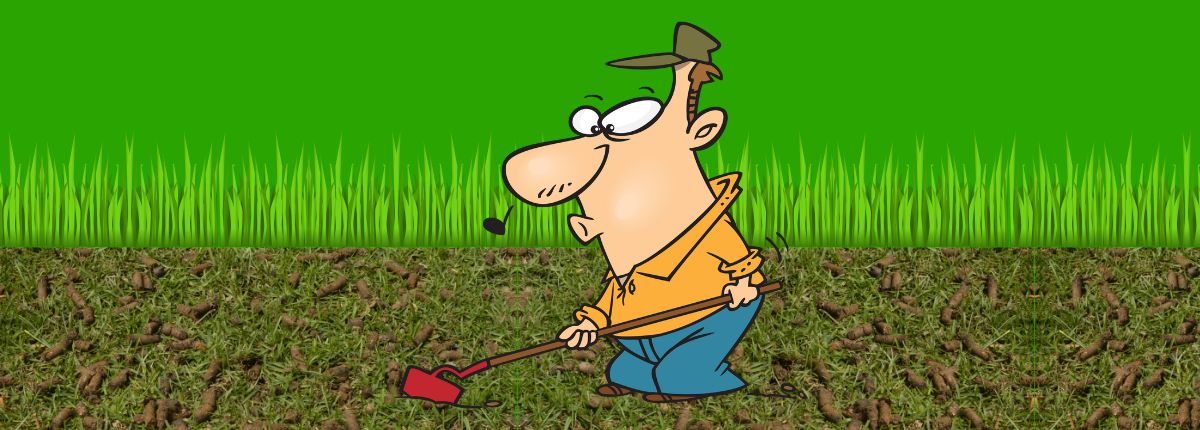
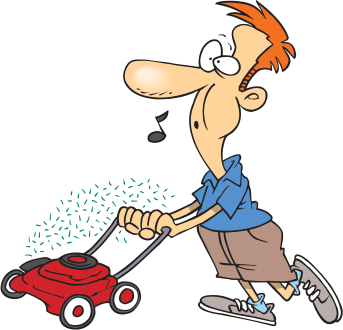
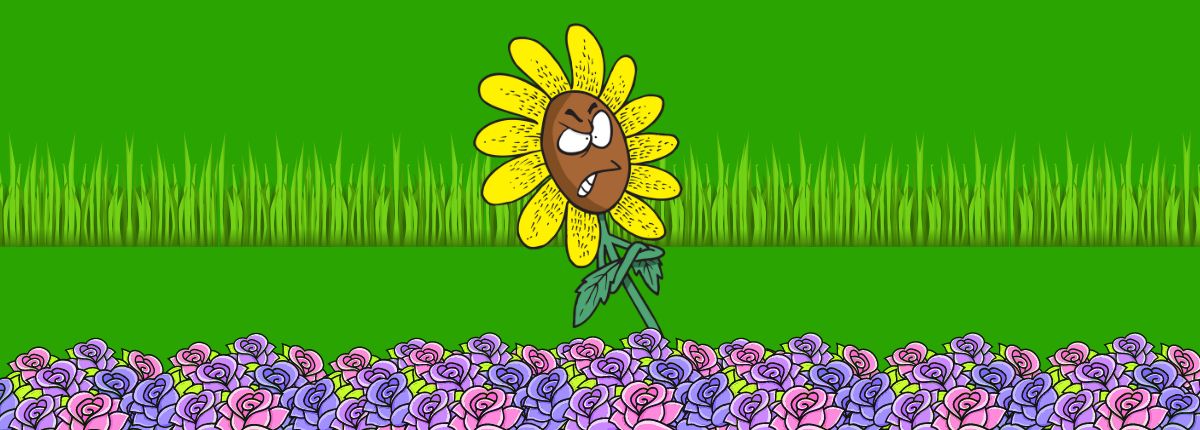
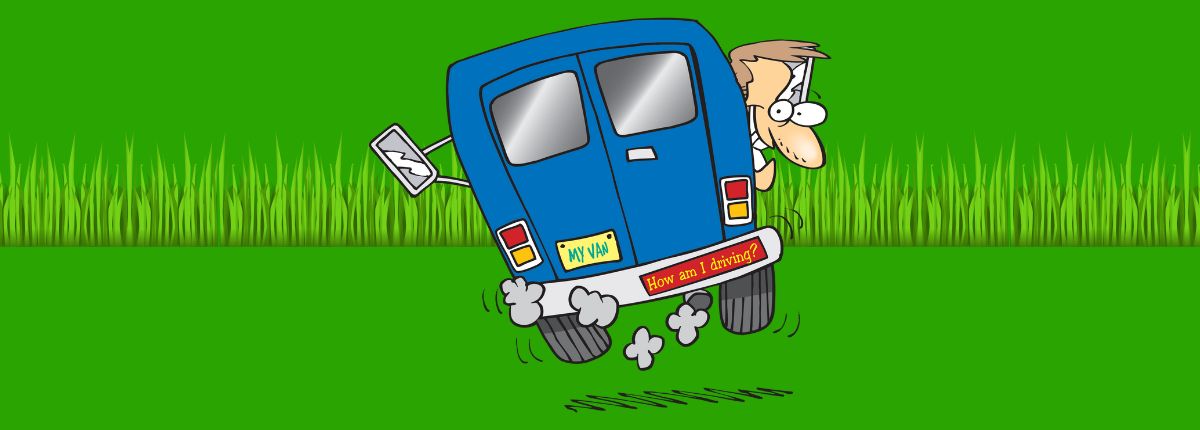


Leave a Reply